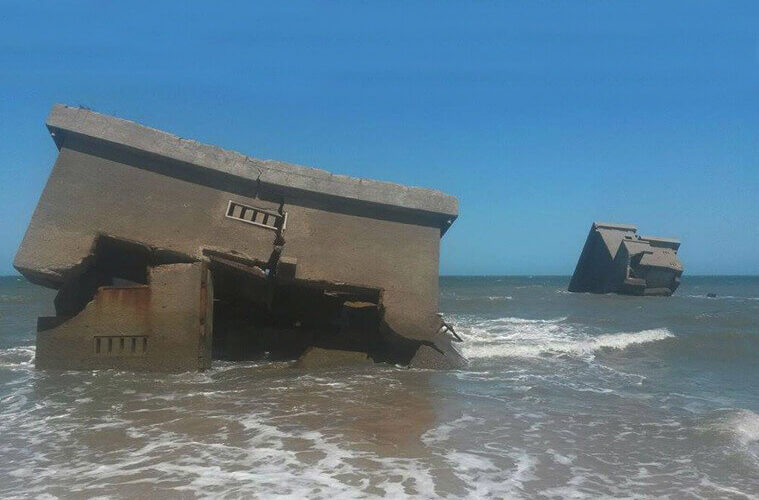Haven’t you wondered why that sandy tear in the middle of the ocean and opposite Maputo’s Bay is forgotten by us? We will travel with you in time through its history at the time so enjoy virgin beaches, with an extra value consisting of having an unforgettable braai under the stars, accompanied by the sea and its breeze. The second day, for sunrise’s lovers, take a walk to the other side of Xefina island to enjoy this powerful moment; breakfast will be waiting for you on your way back. Lunch would also be served if you opt to go for a walk later in the day.
Departure & Return Location
Departure Time
Price Includes
Price Excludes
Complementaries
We will wait for you at one of the harbors to start our adventure. Time will depend on the tides, so we will always confirm in advance, but around 8 a.m.
Bring all the kind of clothes you need for beach and sleeping, and do not forget a warm jacket for the night.
We will use the old harbor of Xefina for landing and we will set our campsite there: our tables, chairs, shadow, fridges, etc. Feel free to go around as we will take care of your items. We will also join you in a walk around the island discovering its secrets, as you will feel in a Hollywood movie when seeing the buildings under the sea!
If you love music, bring you JBL and enjoy the day with your favorite songs and lyrics of the sea. Flamingos sometime appear around, and crabs as well. You will feel like Robinson Crusoe in the middle of nowhere.
The second day we will go further with our boat to explore the second Xefina Island, as there three islands together: Xefina Grande, Xefina do Meio e Xefina Pequena. You will enjoy this expedition very much.
Come and join us to this forgotten island across the Costa do Sol Bay, to learn about the history of this Island whilst enjoying the unspoiled beach.
We depart from Maputo at 8.00 am, but this depends on the tides of the day, so the location and time will be informed the previous day before the start of this tour. This is a 2 days-1 night tour, so we will take all the camping gear and food with us. This tour includes one of our guide-hosts, boat transfer from and back to Maputo, tables, chairs, all meals on full board, water and soda drinks, shadow and cooler boxes with ice, but you still can bring your extra food or drinks (gin and tonic or wine) and store them in our fridges.
Don’t forget to bring hat/cap, sunscreen, extra drinks or your special food/snacks, camera, swimming clothes, towel… If you are a music lover, you can bring your portable Bluetooth speakers so that you can enjoy the soft music whilst enjoying the beach. We will offer you a sleeping bag but you can bring your own if you like to, and don’t forget to bring warm jacket and warm clothes as sometimes it may get cold during the night.
We will use the old harbor for landing, and we will choose a nice spot for our camping. Our team will set up the camp, the shadow, chairs and all the needed equipment, so you can enjoy the scenery. If you would like to have some snacks, water or drink before you start exploring the place, chat to your guide and get the belly ready for continuing the adventure.
You can take a walk around the Island, whilst our team will be preparing you a light delicious lunch and watch your belongings. You can swim and enjoy the beauty of the Indian Ocean.
Xefina is one and virgin getaway places very close to the City of Maputo. Its historical feel makes it unique and only more frequently visited by fisherman in their small fishing boats.
It is believed that Xefina Island has been partly inhabited for centuries, however with no natural water sources it does not afford ideal living conditions. In the 19th century it was used as an army base and a fort was built here, with the main aim of protecting the main City of Maputo, as all ships must arrive through the channel between Inhaca and Xefina Islands. It was further developed as a prison. The old prison island holds very deep stories, these can be clearly viewed from the shore and the remaining ruins, although you won’t find any history books that detail the dark past of this base; it was also used by the Portuguese as a concentration camp for political prisoners in the years leading up to the revolution, and reports of rooms used exclusively for torture are often told.
Big Xefina Island (Ilha de Xefina Grande) is the main Island, despite its proximity to Maputo it is still a rare trip. There are actually tree Xefina Islands, however the other two are much less visited and consists mainly of small bushes and not as attractive beaches. The Islands begin where the Incomati River enters into Maputo Bay and are formed by the deposits from this river. Approximately it is believed that at least 60 people live on the Island, fisherman mainly, and this tiny number is because there is no electricity or schools on the Island.
We always carry with us soccer and volley balls to keep you entertained; if you get tired of the water you can play games, read a book, listen to music. At a time you choose we will serve you with light picnic lunch, enjoy with a cool refreshment or a cold 2M; we will provide a shadow, chairs and table for this moment.
Our guide/host will be there with you always, so please he will let you know the possible activities that you can do around the Island, and also the times for meals –feel free to ask him any questions or request that you may have.
After enjoying a nice lunch, it’s time for a nap, or simply lay on the sand enjoying the sound of the ocean whilst sun bathing. Later the first day, take time after lunch to explore more of this beautiful Island or go and explore the mangroves. It will be a walk you would never expect. 🙂
A mangrove is a shrub or small tree that grows in the coastal or brackish water; the term is used for tropical coastal vegetation consisting of such species. Mangroves occur worldwide in the tropics and subtropics. Mangroves are salt-tolerant trees, they are adapted to life in harsh coastal conditions, they contain a complex salt filtration system and complex root system to cope with salt water immersion and wave action, they are adapted to the low oxygen conditions of waterlogged mud. The roots of mangroves are very long, because the soil is perpetually waterlogged and little free oxygen is available. Red mangroves exclude salt intake by having significantly impermeable roots which are highly suberized, acting as an ultra.
Mangrove have a capacity of limiting water loss because of the limited fresh water available in salty intertidal soils. Mangroves limit amount of water and they lose through their leaves. They can restrict the opening of their stomata (pores on the leaf surfaces, which exchange carbon dioxide gas and water vapour during photosynthesis) and also vary the orientation on their leaves to avoid the harsh midday sun and so reduce evaporation from the leaves.
Mangroves forests stabilize the coastline, reducing erosion from storm surges, currents, waves and tides. The intricate root system of mangroves also makes these forests attractive to fish and other organism seeking food, and shelter from predators and even for breeding.
Mangrove fruit is edible, which tastes like cheese, is eaten raw and relished by children and adults, it is also sold in some local markets in Africa. In some countries fruits are used in and for making vinegar, and pieces of the barks are used as fishing floats. Smaller mangroves fruits are eaten by animals such as crabs, plankton…
In these mangrove forests, you will find mangroves crabs; they have been shown to be ecologically significant in many ways as they keep much of the energy within the forests by burying and consuming leaf litter from the mangrove trees. Along with burrowing in the ground, at high tide and in the face of predators these crustaceans can climb trees to protect themselves. Mangrove crab larvae are the major source of food for young fish inhabiting the adjacent waterways, indicating that crabs also help nearshore fisheries; the adult crabs are food for threatened species such as crab plover.
Some people has been asking if you can eat mangrove crabs… The answer is yes, you can eat mangrove crabs -the shell turns red when cooked-. Perfect serve mangrove crab is delicious in soups. Mangroves crab are found in muddy areas associated with mangroves and seagrass beds in the tidal mouth of rivers and sheltered bays.
Mangrove forests are endangered. The mangrove ecosystem is one of the important to the world’s economies and one of the most endangered. By definition mangroves grow in swamps which are areas that are fully submerged but support populations of trees and other woody plants.
Later, watch sunset from the beach, having a gin and tonic, a glass of wine or 2M whilst you watch the lovely African sunset. We will set up your tents and please if you don’t want us to put the top of your tent so that you can watch the stars at night let us know. Every star you see in the night sky is bigger and brighter than our sun and stargazing is deeply romantic.
You are in a free and safer environment, delightfully disconnected, leaving you and your loved one free to re-connect with each other. Sunsets are more colourful than sunrises because the sun is low on the horizon. Sunlight passes through more air at sunset. When the sun is higher in the sky, more atmosphere means more molecules to scatter the violet and blue light away from your eyes, this is why sunsets are often yellow, orange and red.
We will serve dinner at the time you choose. Our campsite will be along the beach so you can experience the beach life at night and feel the difference. We will make a bonfire, because sometimes during the nights it gets colder, so you can seat around and warm yourself whilst you narrate how the day went.
The second day you can wake up early and watch the sunrise. Tell us if you would like to have a cup of coffee early in the morning, or you prefer have it at your breakfast. We are easy for timings, so let us know your wishes.
We will spend the morning exploring the area, walking, playing games or just relaxing on the beach.
Our depart time will depend on tides again, but we will inform you accordingly. We will depart Xefina Grande in our speedboat and we will go and visit the other two Xefina Islands, Xefina do Meio and Xefina Pequena. On the landward side of Xefina Grande lies Xefina Pequena, a small desert area by a narrow gap from Xefina do Meio. On these other two Xefinas there are no people living there, because they are too small and there is no fresh water.
Our tour will end at the harbour of Maputo. If you need some taxi transport, please let us know, so that we can arrange for a taxi to drop you at your accommodation.
Do not hesitate to give us a call or send a message. We are looking forward to help you out ☺

